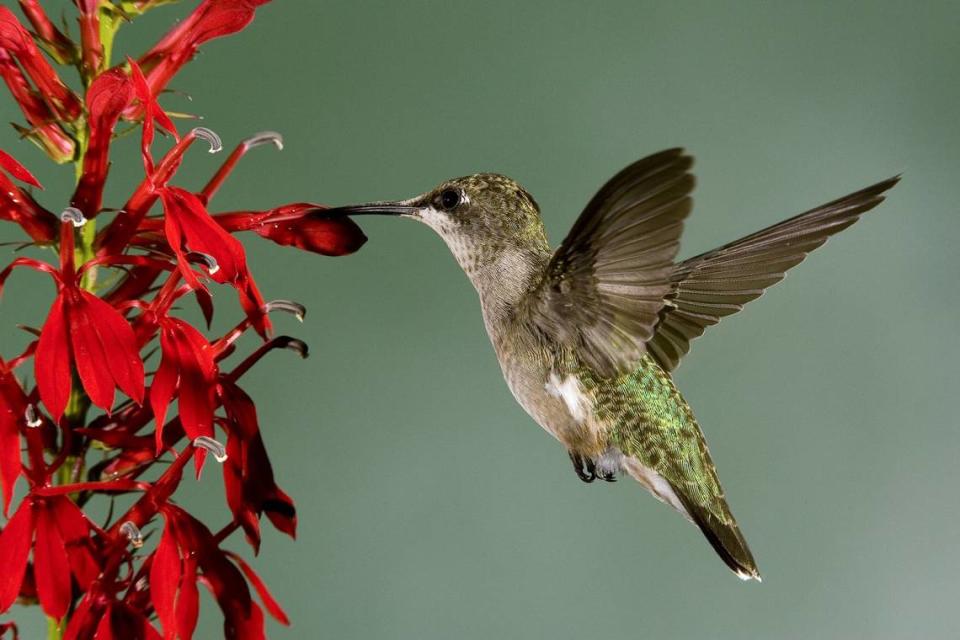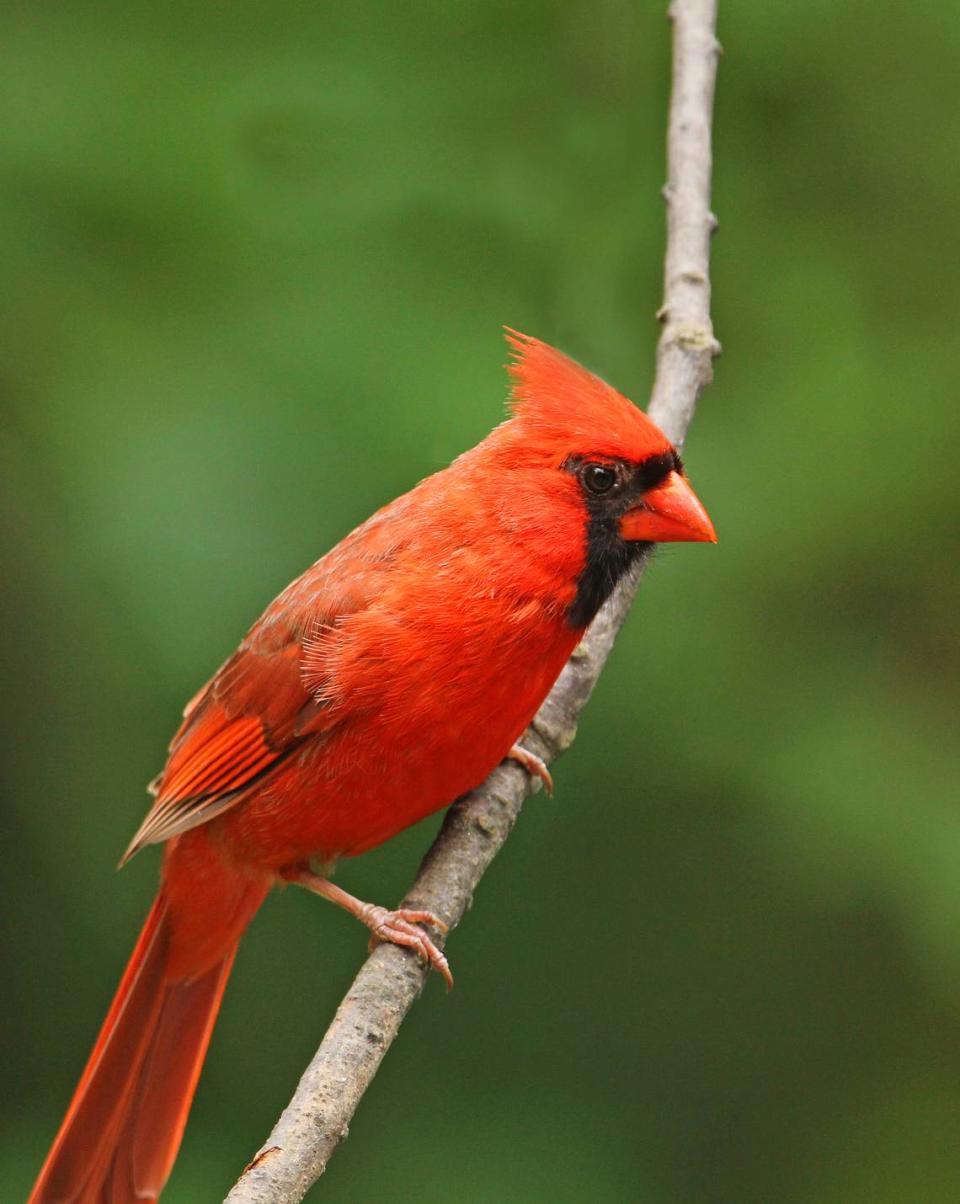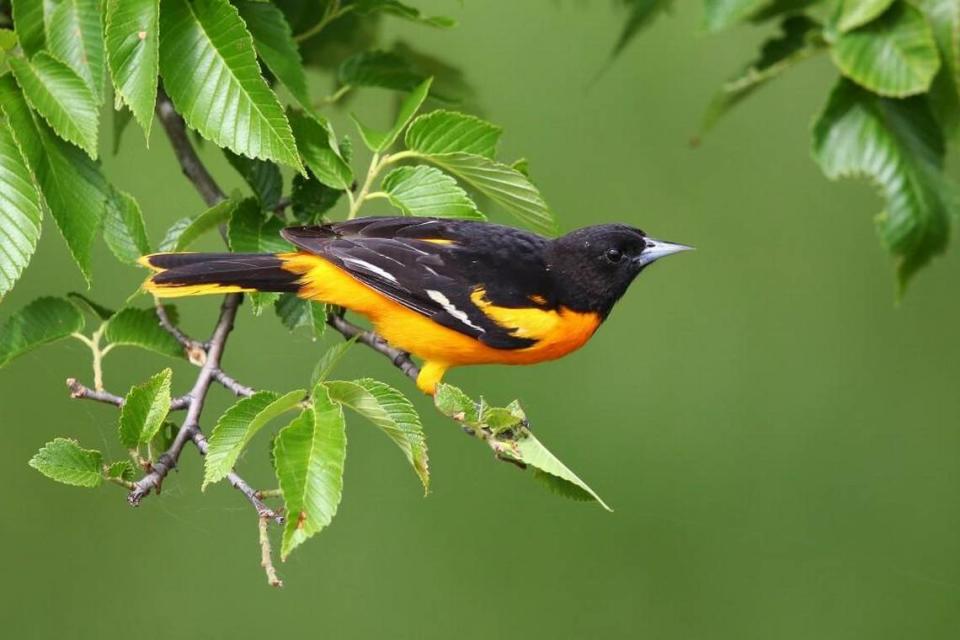Bird-watching in Wichita? You’ll likely see these 6 types at your feeder in late summer
With Wichita’s scorching hot weather easing just slightly in the coming days, now could be a good time to sit outside and watch your bird feeder — and make sure your bird bath is ready for a visit.
Mike Rader, wildlife education supervisor with the Kansas Department of Wildlife and Parks, said many bird species in Kansas are experiencing their fall migration.
“We are starting fall migration, even though it doesn’t feel like it or seem like it,” he told the Eagle Friday. “Fall migration for a lot of species starts in late July or early August and runs through September or October.”
With fall weather and critters in mind, we’ve rounded up six birds you’re likely to see at your Wichita feeder as summer bleeds into autumn.
Common birds at your Kansas feeder
With fall migration underway, Rader said now is a good time to view hummingbirds.
The most common hummingbird species in the area is the ruby-throated hummingbird. These birds can be identified by their emerald green color and gray/while underparts, according to All About Birds, a product of the Cornell Lab of Ornithology. They are small creatures, measuring just 3.5 inches long and weighing about 4.5 grams.

Another species you might spot are the Rufous hummingbird, but they are not as abundant as their ruby-throated counterparts. Male Rufous hummingbirds are bright orange and have a red throat.
The males leave Kansas before the females, so you’ll see male hummingbirds through early September. Hummingbirds spotted later in the year are typically females.
Other common birds you’ll see this time of year are house finches and house sparrows, Rader said.
According to All About Birds, house finches can be identified by their notched tail. The males are red in color around the face and breast with a brown belly, tail and back. The female house finch is brown with streaks. House finches usually eat seeds, buds and berries, according the National Audubon Society.
House sparrows, on the other hand, are chunky birds, All About Birds says. The males have gray crowns and chestnut color necks, while female house sparrows can be identified from their buff, black and brown stripes. The National Aubudon Society reports their diet typically consists of weed and grass seeds or waste grain.
You’ll probably see a cardinal at your feeder this time of year, as well, as they are one of Wichita’s resident birds for the summer season, Rader said. The male cardinal’s bright red color is hard to miss. Cardinals’ diets are more rounded, eating seeds, berries and also some insects.

If you have a nectar feeder in your yard, you’re likely to see a Baltimore oriole. Male orioles can be identified by their bright orange/yellow belly and their black head. The oriole’s diet consist of insects, nectar and berries.
Orioles will be gone in the fall, however, migrating to Florida, the Caribbean, Central America and northern South America.

Woodpeckers are also common in Kansas, including the red-headed, red-bellied and downy woodpeckers to name a few. Britannica says there are about 180 birds in the woodpecker family, and they can be found almost worldwide.
The woodpecker is best known for looking for insects by pecking tree bark. The National Audubon Society reports red-headed woodpeckers eat insects, spiders, earthworms, nuts, seeds, berries and more. The red-bellied woodpeckers eat mainly plant materials, but sometimes tree frogs, bird eggs and more. Downy woodpeckers have a diet of mostly insects.
When summer comes to an end, don’t take down your feeders quite yet. Rader said the prime time to view most bird species in the area is fall, winter and early spring, when Kansas usually gets an influx of Northern species.
For more information on species of birds in Kansas and the Wichita area, you can check out the Wichita Audubon Society and the Audubon of Kansas.
What to know about bird feeders in your Kansas yard
While bird feeders are a fun way to attract winged friends to your property, they’re not the main food source for birds, Rader said.
“With extreme temperatures ... you may help individual birds, but typically they’re finding food somewhere [else],” Rader said. “We’re not saving any birds from dying necessarily, it’s just an attempt to get them close [to] people.”
With the high-temperature days, Rader said it’s important to keep up with cleaning your hummingbird feeders, as they can mold.
“You have to be pretty careful of letting something out for too long,” he said. “Be sure and swap them out and clean them out very well.”
The wildlife education supervisor said while many people focus on bird feeders, the critters are usually looking for water.
“That’s one of the highest attractive things,” he said.
Rader said a common water source people use are bird baths, bubbling rocks and small ponds.
“There’s plenty of food typically out where they would be at to eat, but it’s water that they’re after,” Rader said.
Even owls can be spotted using bird baths this time of year, he noted.
